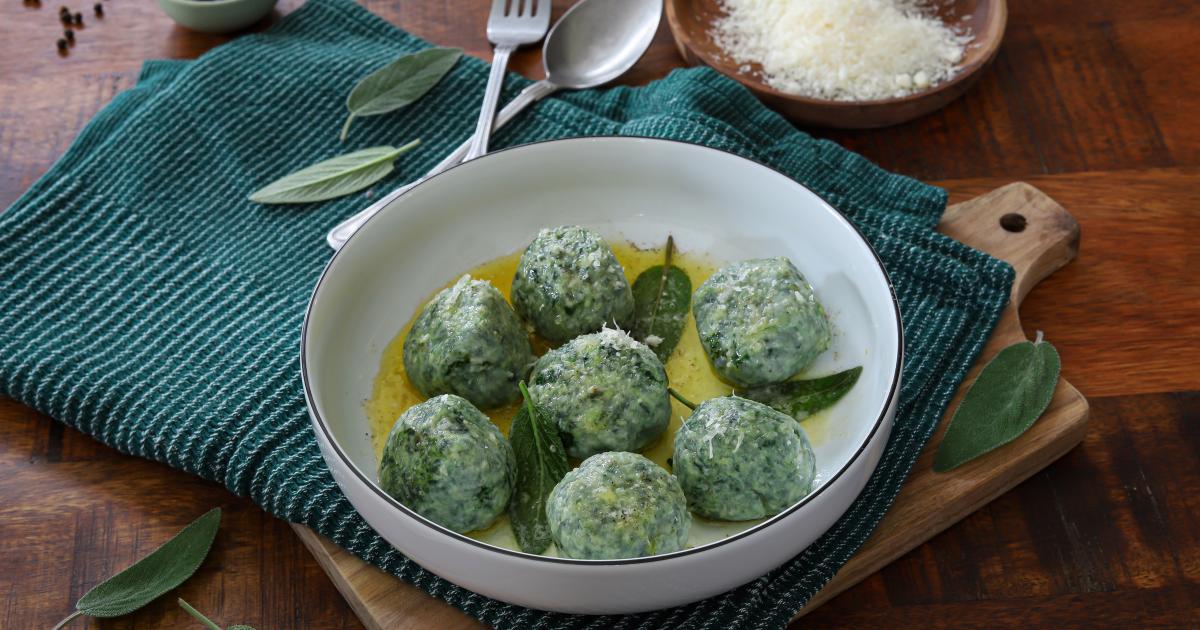
Suggested video What products are in season in February?
Video 1 of 2
THE “gnudi” are balls of ricotta and spinach that are cooked like gnocchi. They are seasoned with sage butter and grated parmesan, or with “sugo”: the Italian tomato sauce.
The name derives from the Tuscan dialect: “gnudi” in Tuscany means “naked” to emphasize their nakedness in relation to the ravioli, which are “dressed” in dough.
The recipe dates from the Middle Ages and is said to have originated in monasteries, during the period of Lent: the forty days preceding Easter, when Christians are supposed to fast or eat “lean” by renouncing rich dishes and certain ingredients such as meat. .
Over the centuries in Italy, the “lean cuisine” (literally “lean cuisine”), resulting from the need to follow the rule of Lent, gave birth to many variations of classic recipes, made in a more sober way, or with less rich ingredients.
But since Italians love to eat well, even “di magro” recipes are very tasty, no less than the original recipes, so much so that they have become widespread in everyday Italian cuisine, throughout the year and outside of religious beliefs.
So for example, this is how ravioli, usually stuffed with meat, during Lent they were stuffed with ricotta and spinach, considered less rich and lighter than meat.
Ricotta and spinach ravioli, which are eaten all year round and are one of the best-known recipes of Italian cuisine, are also called “ravioli di magro” due to their origin.
Probably to be even more strict during Lent, in Tuscany they thought of removing the dough from the ravioli, because they are made with eggs, and keeping only the stuffing: this gives naked ravioli, the “gnudi”.
But here is another hypothesis: faced with the dilemma of having to give up something to respect Lent, we must have thought that we could do without the dough but that we could not do without the stuffing, which is the part more delicious ravioli. So we kept only the stuffing of the ricotta and spinach ravioli, and we gave birth to “gnudi”: “naked” ravioli!
But you should know that gnudi are not the frugal dish we think. They are a masterpiece of delicacy and taste, and their “nakedness” is a concentrate of flavors that has made these ricotta and spinach balls famous, also in other regions of Italy. For example, in Lombardy they are called “malfatti” (badly made) and they are shaped with an oval shape, and in Trentino they are called “strangolapreti” (strangle priests).
You can vary the vegetables in the “gnudi”, replacing the spinach with chard or watercress.
Now let’s move on to the recipe for four people: you’ll see, it’s simple to prepare and tasty, a real treat!
Source:https://www.750g.com/connaissez-vous-les-gnudi-les-fameux-raviolis-nus-italiens-a36672.htm


